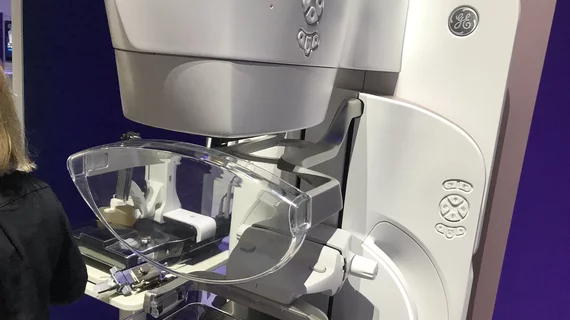87% of mammography centers now have 3D breast imaging systems
Purchases of new digital breast tomosynthesis (DBT) systems have been been rising rapidly over the past few years and they now account for 46% of U.S. mammography imaging systems. That's according to the latest June 2023 statistics released by the U.S. Food and Drug Administration's Mammography Quality Standards Act and Program (MQSA). Experts in the field say the rising numbers of 3D mammography systems show it is becoming the new standard of care. At its current rate of growth, DBT it is expected to overtake the number of full-field digital mammography (FFDM) systems within the next couple of years.
There are 24,998 mammography systems in service in the United States according the the MQSA. Of these, 13,390 are digital mammography systems and 11,605 are newer DBT systems. The difference between the two technologies stands at 1,785, but older digital mammography systems are being replaced at a faster pace by 3D mammography.
However, women's imaging centers are still purchasing FFDM systems, and the number of these systems has actually increased by an additional 201 units since June 2022. Nonetheless, DBT is growing at a much faster rate, with 700 new tomosynthesis systems being added over the past year. In June 2023, of the 8,836 FDA certified mammography facilities in the U.S., 87% of these are reported have at least one DBT system installed.
"We went from several years ago where very few facilities or hospitals had one unit, to now where we have facilities completely converting over to tomosynthesis. So the implementation has been pretty wide over a quick period of time," explained Stamatia Destounis, MD, FACR, a radiologist and managing partner at Elizabeth Wende Breast Care in Rochester, New York, chair of the American College of Radiology (ACR) Breast Commission, and member of the Public Information Advisors Committee for the Radiological Society of North America (RSNA) and Society of Breast Imaging (SBI) Communication Committee. "The number one benefit is a reduction in call back rates. So, women are not getting called back for false alarms and false positives. We also have an increased cancer detection rate. With tomosynthesis we get a better mammogram where we can find more cancers and reduce patient anxiety. It is just a better test and I do think it will continue to have wide implementation."
"From my experience, tomosynthesis is now the default breast imaging modality. I suspect there are still some centers doing only full-field digital mammography, but I think they are few and far between," explained immediate past president of SBI John Lewin, MD, who is also an associate professor of radiology and biomedical imaging, and division chief of breast imaging at the Yale School of Medicine.
Breast imaging centers are adopting newer 3D mammography technology because it gives radiologists the ability to view the breast in slices, similar to how CT imaging is displayed. This allows readers to view masses layer by layer to see if the suspicious area is just overlying layers of dense breast tissue or is indicative of malignancy. Users say this helps in determining whether a patient should be called back for additional imaging and/or biopsy or if the area of concern is just overlapping tissue.
"We are excited about 3D tomosynthesis, where we can do thin slices through breast tissue to uncover these cancers that hide in those dense, dense areas of the breast," said Constance "Connie" Lehman, MD, PhD, chief of breast imaging, co-director of the Avon Comprehensive Breast Evaluation Center at the Massachusetts General Hospital, and professor of radiology at Harvard Medical School.
Barriers have slowed wider adoption of DBT
The first FFDM unit was approved for marketing in January 2000, and quickly became the new standard of care because of its improvements from film mammography systems. The first DBT system was cleared by the FDA in 2011. Initially, adoption of DBT was low because there was no reimbursement, but that has changed in recent years, leading to a spike in new DBT systems being purchased. The adoption rate for DBT has also been slower because of the higher cost of these systems. Another barrier between DBT and widespread adoption is that these systems produce a massive increase in the number of images acquired during each exam as part of the 3D dataset, which requires additional IT support and archive storage, resulting in higher costs.
The standard for diagnosis is still 2D mammography because it is the same imaging format for the majority of prior exams used to compare changes in breast tissue between screenings. Regulators of mammography systems want a true apples-to-apples comparison of prior breast imaging to see any changes inside the breast. Early on, this required the patient to undergo a standard 2D mammogram and then the 3D exam, increasing the amount of radiation they receive and costs they incur. But DBT system vendors have since added features to create a simulated 2D mammogram along with the 3D dataset to avoid the need for additional imaging.
The time to read 3D DBT exams is also longer than 2D exams. Instead of just a handful of images, the DBT datasets include 40 or more images to look through. However, Lehman said artificial intelligence (AI) will likely see increasing use to help look through these exams. AI can do a first pass and flag images where radiologists should spend more time because the software detected something that was not normal.

